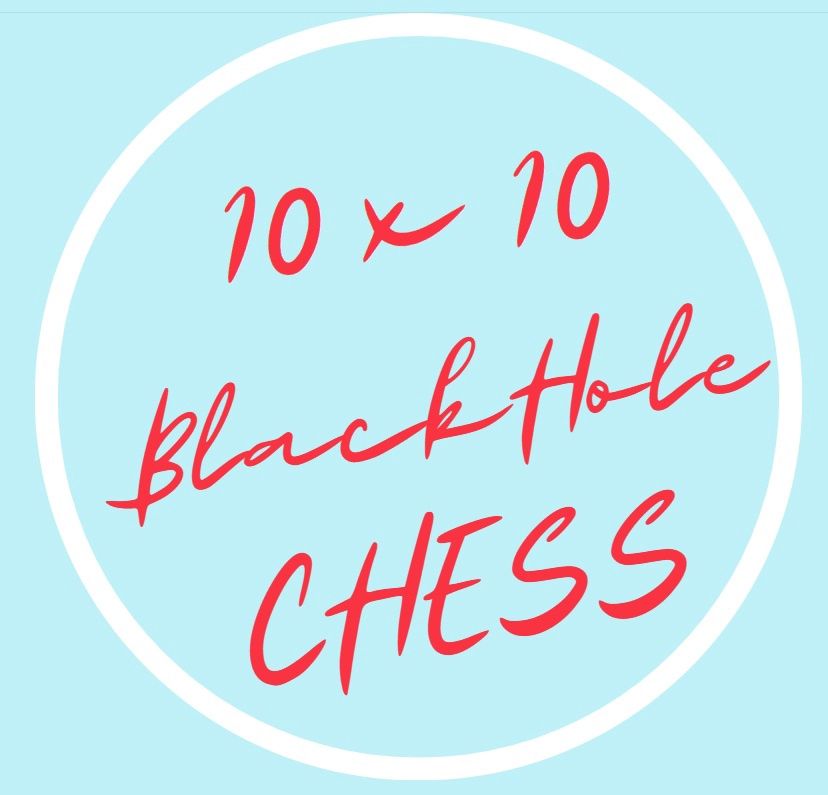BlackHole Chess 10 x 10
Rules of 10 x 10 BlackHole Chess Follow Conventional Rules of Chess. To Review:
Movement of Pieces: (SAME AS CONVENTIONAL CHESS)
Each type of piece moves in a specific way:
◦ King: One square in any direction (horizontally, vertically, or diagonally).
◦ Queen: Any number of squares in any direction.
(horizontally, vertically, or diagonally).
◦ Rook: Any number of squares horizontally or vertically (but not diagonally).
◦ Bishop: Any number of squares diagonally (but not horizontally or vertically).
◦ Knight: Moves in an L-shape: two squares in one direction (horizontally or vertically) and then one square perpendicular to that direction, or one square in one direction and then two squares perpendicular to that direction. The knight can jump over other pieces.
◦ Pawn: ▪ On its first move, a pawn can move forward one or two squares. After that, it can only move forward one square at a time.
▪ Pawns capture diagonally forward one square.
▪ Pawns can also capture en passant, which is a special pawn capture that can occur when a pawn moves two squares forward from its starting position and lands next to an opponent's pawn. In this case, the opponent's pawn can capture the moving pawn as if it had only moved one square forward.
▪ Pawns promote when they reach the opposite side of the board. Upon reaching the opposite end, a pawn can be promoted to any other piece except another king.
Special Moves:
Castling: This is a move involving the king and one of the rooks of the same color. For KING SIDE CASTLE, the KING moves from E1 to C1 and the rook moves from A1 to D1. For KING SIDE CASTLE, the KING moves from E1 to H1 and the ROOK moves from J1 to G1. The conditions for castling are: ◦ Neither the king nor the rook involved has previously moved. ◦ There are no pieces between the king and the rook. ◦ The king is not in check, and the squares the king moves over and lands on are not under attack. ◦ The king cannot castle out of, through, or into check. • En passant: As mentioned earlier, this is a special pawn capture. • Pawn promotion: When a pawn reaches the opposite end of the board, it can be promoted to any other piece except another king.
Check and Checkmate:
• Check: When a player's king is under attack, it is said to be in check. The player must make a move to remove the threat to the king.
• Checkmate: If a player's king is in check and there is no legal move to remove the threat, it is checkmate, and the game ends.
Draws:
• Draws can occur by: ◦ Stalemate: When the player to move has no legal move and their king is not in check. The game is drawn as a stalemate.
◦ Insufficient material: If neither player has enough pieces to force checkmate, the game is drawn.
◦ Threefold repetition: If the same position occurs three times with the same player to move and the same possible moves, the game is drawn.
◦ Fifty-move rule: If there have been no captures or pawn moves in the last fifty moves by each player, the game is drawn.
◦ All other rules of conventional chess apply.

